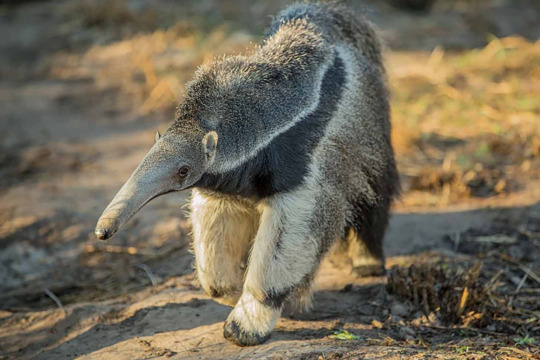#a new Argentina
Explore tagged Tumblr posts
Text
Is it unhinged to slip Evita lyrics into a fanfiction about two lovesick, repressed cardinals? Absolutely.
Do I regret it? Not even a little.
#musical theatre#evita#a new Argentina#patti lupone has a grip on me okay#conclave#conclave 2024#aldo bellini#thomas lawrence#ao3 fanfic
17 notes
·
View notes
Text

yeah
462 notes
·
View notes
Text

La Plata, Argentina @antifastreet
#La Plata#Argentina#art#street art#free palestine#palestinian genocide#save palestine#i stand with palestine#palestine news#all eyes on palestine#palestine#free gaza#gaza genocide#gaza strip#gazaunderattack#gaza#free rafah#all eyes on rafah#rafah#save rafah#rafah under attack#ausgov#politas#auspol#tasgov#taspol#australia#fuck neoliberals#neoliberal capitalism#anthony albanese
683 notes
·
View notes
Text

Franco Colapinto as the Page of Swords:
The page of swords represents someone embarking on a new idea and a mental adventure. Full of enthusiasm and good cheer, this person is eager to share and discuss their thoughts and plans for what can be.
The Page of Swords is someone who never seems to run out of ideas. They are curious, always asking questions, and gifted with a sharp tongue and quick wit to match. Their aptitude for language also makes them an incredible communicator, and with their love of ideas, you may find them always engaged in some passionate debate.


Tag list: @st-leclerc @rubywingsracing @saviour-of-lord @three-days-time @the-wall-is-my-goal @albonoooo @ch3rubd0lls @brawngp2009
#this man has moved me I fear#v heavily requested#usually I’m hashtag NOT a fan of ppl requesting that I draw a driver over and over but#I get it#viva argentina#and such#why is he so charismatic#I can’t believe I. as a lesbian. am a little in love with this man.#anyways#page of swords#this is fully based off of all of the interviews I’ve watched of him!! my Spanish is not the greatest lol but his manner of speaking#he just seems very lively#and his enthusiasm for this sport and the icons in it and his excitement to be there is contagious and def made an impression#he’s also I think now the younger driver (?) on the grid and this card typically represents someone young in your life having news#quick wit….#yeah#this one doesn’t need much of an explanation#so so happy he’s doing well I hope he gets that sauber seat#manifesting#f1#formula 1#f1blr#f1 fanart#annie’s art#formula one fanart#formula 1 fanart#formulanni#franco colapinto#fc43#f1 tarot
363 notes
·
View notes
Text


Source
Let’s go!
#working class#workers rights#strike#general strike#workers#labor#unions#capitalism#news#current events#good news#Argentina#politics#government#the left#progressive
746 notes
·
View notes
Text

designing some gxk stickers for a con
#my art#ilustration#digital art#artists on tumblr#fanart#godzilla#kaiju art#monsterverse#kong#suko#godzilla x kong the new empire#godzilla x kong#sticker#stickers#argentina
616 notes
·
View notes
Text
— Recent giant anteater sightings in Rio Grande do Sul state indicate the species has returned to southern Brazil, where it had been considered extinct for more than a century.
— Experts concluded that the giant anteater ventured across the border from the Iberá Park in northeastern Argentina where a rewilding project has released around 110 individuals back into the habitat.
— The sightings emphasize the importance of rewilding projects, both to restore animal populations in specific regions and help ecosystems farther afield.
— Organizations across Brazil are working to protect and maintain current giant anteater populations, including rallying for safer highways to prevent wildlife-vehicle collisions that cause local extinctions.
Playing back hours of footage from a camera trap set in Espinilho State Park in the south of Brazil in August 2023, Fábio Mazim and his team banked on possible sightings of the maned wolf or the Pantanal deer and had their fingers crossed for a glimpse of a Pampas cat (Leopardus pajeros), one of the most threatened felines in the world.
What they didn’t expect to see was an animal long presumed extinct in the region. To their surprise, the unmistakable long snout and bushy tail of a giant anteater ambled into shot.
"We shouted and cried when we saw it,” the ecologist from the nonprofit Pró-Carnívoros Institute told Mongabay. “It took a few days to grasp the importance of this record. A sighting of a giant anteater was never, ever expected.”
Last seen alive in the southwest of the Rio Grande do Sul state in 1890, the giant anteater (Myrmecophaga tridactyla) has since been spotted 11 times since August 2023, although the scientists are unsure whether it’s the same one or different individuals. However, the sightings confirm one clear fact: The giant anteater is back.
It's a huge win for the environment. Giant anteaters play an important role in their ecosystems, helping to control insect numbers, create watering holes through digging and are prey for big cats such as jaguars and pumas.
The habitat of the giant anteater stretches from Central America toward the south cone of Latin America.
Its conservation status is “vulnerable,” although it is considered extinct in several countries, including El Salvador, Guatemala and Uruguay, as well as specific regions such as the states of Rio de Janeiro, Espirito Santo, Santa Catarina and (until now) Rio Grande do Sul in Brazil and the Cordoba and Entre Rios regions in Argentina.
In the last six months, the giant anteater was spotted on camera 11 times in the Espinilho State Park in the state of Rio Grande do Sul in Brazil. It was the first time in 130 years that the species has been seen alive there.
Yet not only is it a triumph for conservationists to see these animals returning to Brazilian biomes, it’s also a surprising mark of success for a rewilding program about 150 kilometers (93 miles) away in neighboring Argentina.

Rewilding Argentina’s biomes
Iberá National Park in Corrientes province in northeastern Argentina is a 758,000-hectare (1.9 million-acre) expanse of protected land comprising a part of the Iberá wetlands with its swaths of grasslands, marshes, lagoons and forests. The region was once home to just a handful of giant anteaters after habitat loss, hunting and vehicle collisions decimated the population.
Since 2007, the NGO Rewilding Argentina, an offspring of the nonprofit Tompkins Conservation, has been reintroducing the species back to the area, most individuals being orphaned pups rescued from vehicle collisions or poaching.
So far, they have released 110 giant anteaters back into the wild. Nowadays, several generations inhabit the park, transforming it from “a place of massive defaunation to abundance,” Sebastián Di Martino, director of conservation for Rewilding Argentina, was quoted as saying in an official statement.
The project has been so successful that the giant anteaters appear to be venturing farther afield and moving to new territories beyond national borders, such as Espinilho State Park in Brazil’s Rio Grande do Sul region...
Experts now hope that a giant anteater population can reestablish itself naturally in Espinilho State Park without the need for human intervention.
“The giant anteater returning to Rio Grande do Sul shows the success of the work done in Argentina and how it’s viable, possible and important to do rewilding and fauna reintroduction projects,” Mazim said. “It is also an indication that the management of conservation units and also the agricultural areas of the ecosystems are working,” he added. “Because if large mammals are coming from one region and settling in another, it is because there is a support capacity for them. It is an indication of the health of the environment.”
-via GoodGoodGood, via May 25, 2024
#anteater#giant anteater#brazil#brasil#argentina#rewilding#conservation#conversation news#nature#biodiversity#environment#ecosystem#ecology#good news#hope
609 notes
·
View notes
Text

HAPPY NEW YEAR !! May you all shine bright like the stars in 2024 🌟🌟🌟
A piece I participated in the World Cup zine, visit the full version here
#messi𓃵#happy new year#leo messi#lionel messi#messi#football#futból#football fanart#argentina nt#illustration#digital art#world cup#mxxnart
810 notes
·
View notes
Text

He is also planning on moving Argentina's embassy to Jerusalem
#yemen#jerusalem#tel aviv#current events#palestine#free palestine#gaza#free gaza#news on gaza#palestine news#news update#war news#war on gaza#argentina#javier milei
590 notes
·
View notes
Text

Luka Modric responding to Mbappe and backing up Leo Messi 🚬
158 notes
·
View notes
Note
Hi, Phrog!! I love your art so much, thank you for opening up your asks!!
Could I request a Beetlejuice x Miss Argentina fluff drawing? Thank you, have a great day/night! <3
You absolutely may!!! Sorry it’s been so long in the making, here’s a lil pixelley doodle I came up with:

#Beetletina#miss argentina#beetlejuice broadway#beetlejuice#my art#ask#I think of them like Roger and Jessica Rabbit… or a reverse 50’s couple (except healthier)#My man Lawrence deserves to be a loving Malewife 😤 And you just KNOW Tina’s a breadwinner#You might notice that the resolution is practically pixel art….#and Yes- it is.#I feel so much freer drawing in low resolution- it allows me to draw with a lot less pressure#I’m quite new to ship art… So something like this is a perfect way to practice#Thank you for your ask! As well as all the support you’ve given me. You’re epic! :)
248 notes
·
View notes
Note
how about an Andean Condor?


Photos thanks to Connecticut's Beardsley Zoo & Eduardo Quintanilla respectively.
#vulnerable species#south american bird#south american birds#new world vulture#andean condor#condor#venezuela#columbia#peru#ecuador#chile#bolivia#argentina#animal polls#poll blog#my polls#animals#polls#tumblr polls#bird#birds#south american wildlife
79 notes
·
View notes
Text

Activists seek to oust Mekorot, an Israeli water company, from Argentina
Full article here:
#free gaza#free palestine#gaza strip#irish solidarity with palestine#palestine#gaza#news on gaza#al jazeera#boycott israel#israel#Argentinian Solidarity with Palestine#Argentina#Mekorot#Silvia Ferreyra#Recoleta#Buenos Aires
330 notes
·
View notes
Text
"GNN has reported several times over the last three years about large baleen whales returning to waters in which they haven’t been sighted for decades.
Now again, news from Argentina shows that the benefits of the 1946 International Convention for the Regulation of Whaling are still compounding, with sei whales returning to the South American nation’s coastal waters for the first time in nearly a [century].
Overhunting during the 1920s and 1930s led these massive blue-grey giants to abandon their ancestral waters in Argentina.
“After nearly a century of being hunted to near extinction, sei whale populations are now bouncing back and returning to their former habitats,” said Mariano Coscarella, a biologist and marine ecosystem researcher at Argentina’s CONICET scientific agency, who added that the whales “reproduce every two or three years, so it nearly took 100 years for their population to reach a level where people could notice their presence.”
The third largest whale in the world, the sei can grow up to 64 feet (20 meters) in length and weigh up to 31 tons (28 tonnes). It’s also among the fastest whales in the world, and is certainly the fastest for its size group. It can swim 31 mph over short distances.
Despite being recognized on the IUCN Red List as Endangered, there are estimated to be 50,000 sei whales in a global population that is trending up.
Apart from sei whales and Argentina, a recent survey in the Seychelles sighted 10 groups of at least a few blue whales, the first such observations since 1966.
Back in March, a New England Aquarium aerial survey team sighted a gray whale off the New England coast last week, a species that has been extinct in the Atlantic for more than 200 years.
The largest animal on Earth, the blue whale, is returning to coastal Californian waters in numbers not seen since before the whaling industry, GNN reported in 2023 based on a 2014 survey.
And down in Antarctica, where many different whale species come to feed and breed, recent surveys have found the Southern Ocean is once again becoming a Sarengetti for whales, with an estimated 8,000 Southern fin whales found between 2018 and 2019."
-via Good News Network, May 16, 2024
#whales#whale#blue whale#gray whale#sei whale#fin whale#cetacean#marine mammals#oceans#conservation#conservation news#marine science#marine biology#climate news#climate hope#good news#hope#california#new england#antarctica#argentina#atlantic ocean#endangered species
561 notes
·
View notes